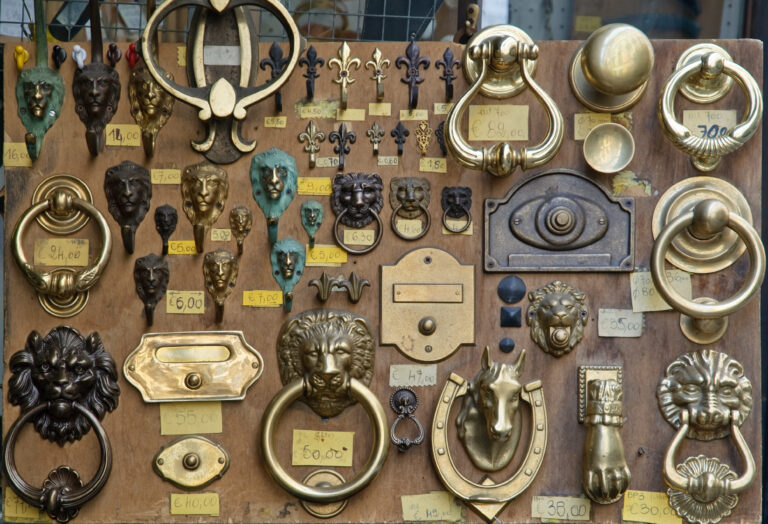Explore the past, reveal what’s hidden, and learn what your home might be trying to tell you.
Is your home trying to tell you something? Whether you’re living in a 19th-century Queen Anne or a 1950s raised ranch, you’re part of your home’s unfolding story. As its current custodian, you care for it—keeping the structure sound, protecting it from the elements, and preserving its character—so that it can continue to shelter you, and eventually, someone new. With each passing decade and every change in ownership, the home drifts a little further from its origin story. That’s what makes the mystery so compelling. Who built it? Who lived here before you? What secrets might be hiding behind the walls, under the floorboards, or inside that curious little cabinet in the hallway?
If you’ve ever wanted to uncover the history (and secrets) of your home, this is your guide.
Start with the Basics: Researching Your Home’s History
The best tool in your arsenal is curiosity. So let’s get nosey, shall we?
- Deeds and Tax Records: Check with the Monroe County Clerk’s Office. You can trace the chain of ownership going back decades (or centuries!).
- City Directories: The Rochester Public Library has searchable city directories. These often list occupants by address, occupation, and even employer.
- Sanborn Maps: These fire insurance maps show building footprints, construction materials, and neighborhood layouts over time.
- Old Permits or Renovation Records: The City of Rochester may have archives of permitted work that give clues about additions, conversions, or even hidden rooms.
- Local Historical Societies: Most towns have a local historian who leads the local historical society chapter. They may have an office at your town hall or in a local museum with archives, artifacts, and local data to share.
Pro tip: Once you have names of former owners, dig into census records or obituary archives for more juicy history!
Rediscover Hidden Features in Your Home
Old homes are architectural time capsules. How many stories have you heard of someone uncovering old artifacts or forgotten architectural features covered up during renovations? You might find hiding behind that drywall or above a drop ceiling:
- Covered fireplaces with ornate mantels or tiled hearths.
- Hidden pocket doors, sealed up for decades.
- Original wood floors or tiling beneath layers of carpet or vinyl.
- Built-in cabinetry or shelving behind false walls or plaster.
- Letters, newspapers, and artifacts (we’ve seen it all—from WWII ration books to love letters in the attic).
- Telephone niches: Small wall cutouts, usually in a hallway, once held rotary phones.
- Milk doors: Tiny cabinet doors accessible from inside and outside—used for dairy deliveries.
- Laundry chutes: Often found in hall closets or bathrooms.
- Built-in ironing boards: Folded into the wall.
Rather than viewing these as oddities, think of them as conversation starters or design opportunities. By highlighting these features, you keep your home’s heritage alive. Remember, a house of a certain age wants to tell its story – all these little doors, chutes, and niches are part of its narrative. In a world of cookie-cutter new builds, your Rochester home’s unique old-school touches are something to cherish. From bricked-over fireplaces to boarded-up transom windows, these hidden gems are just waiting to be resurrected.
If you’re renovating, keep your eyes open and go slow—those anomalies you stumble upon might be original features worth restoring.
Here are some practical tips for identifying and restoring those vintage features:
Do Your Homework: Research your house’s original layout and design. The key is to gather evidence before you start tearing at walls. Old house museums or online forums can also help you learn what features were common in homes of your house’s era.
Look for Telltale Signs: If you have an odd bump-out or thick wall between rooms, it might contain a pocket door cavity. Similarly, check your attic or basement for clues: count chimney flues or vents poking into the attic to estimate how many fireplaces originally existed. Transom windows above doors might be painted shut or covered on one side. Also, pay attention to hardware: a strange floor track or a covered-over hinge in woodwork could signal where a built-in cabinet or folding door used to be.
Probe Gently and Safely: Rather than wielding a sledgehammer, remove small sections of trim or plaster in a strategic spot to confirm what’s behind. Use a flashlight and camera probe to peek into wall cavities. A strong magnet or metal detector can help locate nails or metal pieces of old fixtures inside walls. Be prepared for a mess and wear safety gear. If you discover something major like an old chimney or structural element, consider consulting a professional before removing any supports. And always ensure electric or plumbing lines aren’t in the area before cutting – old houses have many surprises!
Restore Thoughtfully: After revealing a hidden feature, decide on the extent of restoration based on your budget and needs. In some cases, you might do a full restoration; in other cases, a feature can simply be refinished for aesthetics. It’s best to retain original materials whenever possible – old-growth wood, vintage glass, and antique hardware have a character that’s hard to replicate. If parts are missing or too damaged, salvage shops in the Rochester area or specialty catalogs might supply period-appropriate replacements. The goal is to let the home’s original craftsmanship shine again.
Seek Expertise as Needed: Know when to call in experts – a licensed mason for a fireplace or chimney work, a carpenter for adjusting antique doors, or an electrician if you find old knob-and-tube wiring hiding in that antique light niche. Rochester has a strong community of contractors and craftsmen who appreciate and are experienced with old houses. They can ensure that when you uncover a century-old feature, you restore it safely and in line with local building codes.
Stigmatized Properties: What New York Law Says
Buying a house with a reputation – whether as the site of a crime, a death, or even a haunting – raises the question: does the seller have to tell you?
In New York State, sellers are not legally required to disclose if someone died in the home, natural or otherwise. Even if it was… um… dramatic.
In fact, New York famously ruled in Stambovsky v. Ackley (aka the “Ghostbusters ruling”) that a seller isn’t obligated to disclose a haunting unless they’ve publicly advertised the house as such. In that case, a buyer unwittingly purchased a Nyack, NY Victorian whose owner had publicly claimed it was haunted. The appellate court ruled that, because the hauntings were advertised, the house was “legally haunted” and the buyer was allowed to back out of the deal.
That said, if you’re buying and this is important to you, ask. The seller may not have to volunteer the info, but they’re usually open to answering truthfully.
Want to Uncover the Story of Your Home?
Whether you’re researching your current house or thinking of buying a historic property with charm (and maybe a few secrets), we’d love to help.
At Sharon Q Realty, we know Rochester’s neighborhoods—and we are fascinated by their histories. Ready to add to your home’s history—or start its next chapter perhaps? Contact us today.






